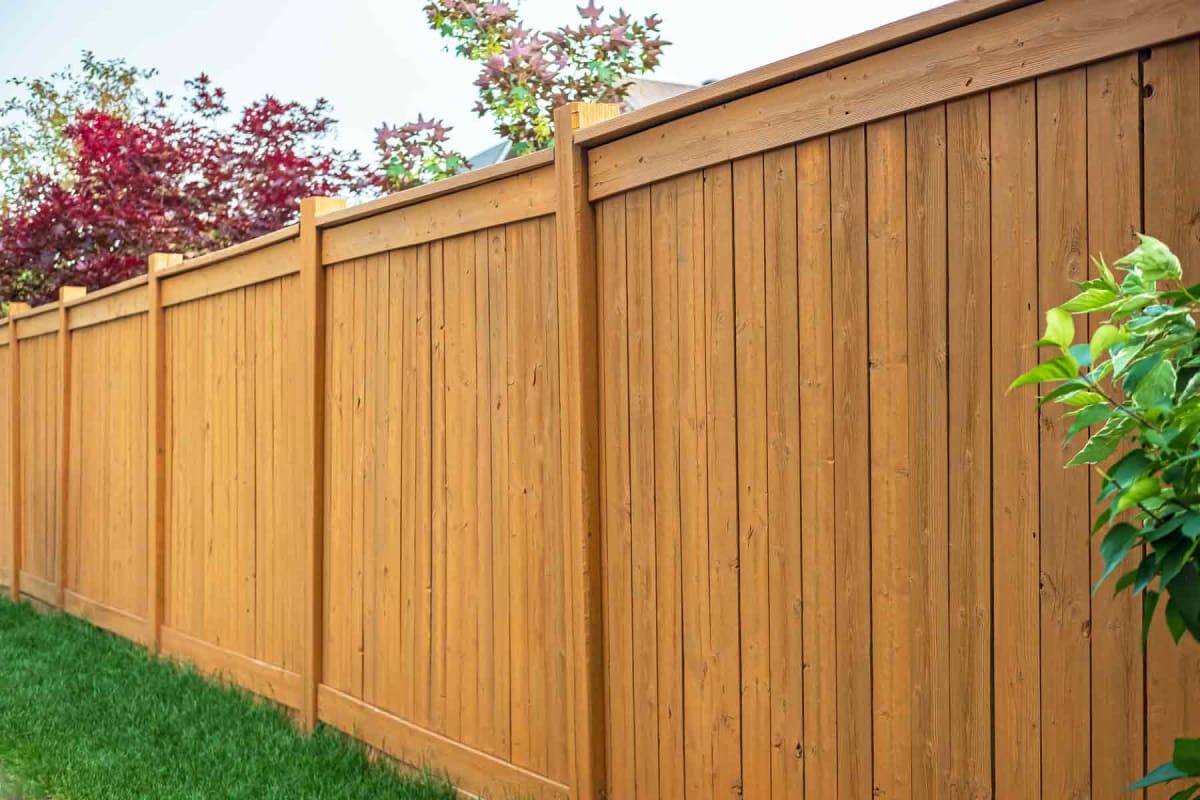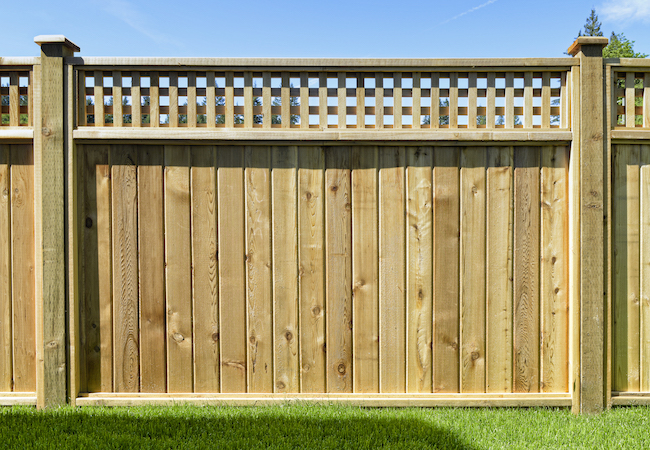All Categories
Featured
Fencings are necessary structures that supply personal privacy, protection, and visual allure to your property. Nonetheless, they are likewise revealed to the components and can experience damage from weather like rain, wind, sunlight, and snow. Whether you have a wooden, vinyl, steel, or composite fence, taking steps to safeguard it from the weather will certainly prolong its life and protect its appearance. Below are a number of ways you can protect your fencing from weather-related damages.
![]()
Wooden Fencings: Wood is vulnerable to rot, warping, and insect invasions when revealed to dampness. If you choose a wooden fence, choose materials like cedar or redwood, which are normally much more resistant to the components. Additionally, go with pressure-treated wood, which has actually been chemically treated to withstand rot and bugs. Vinyl Fencings: Plastic fences are highly resistant to the aspects. They won't rot, warp, or crack like timber, and they are unsusceptible to insect damage. Vinyl is likewise UV-resistant, so it does not discolor in the sun as rapidly as various other materials. Metal Fences: Wrought iron and light weight aluminum fences are resistant and durable to the majority of weather conditions. Nevertheless, metal can rust if revealed to moisture for extended durations. Ensure it is powder-coated or galvanized to prevent rusting if you have a metal fence. Composite Fences: Composite fencings incorporate wood fibers and plastic, providing the look of timber with improved durability. They are resistant to rot, pests, and fading, making them a great option for regions with severe climate condition. 2. Apply Safety Coatings and Sealants. Applying safety coatings to your fence can avoid dampness and UV damages, dramatically prolonging its life expectancy.
Wooden Fencings: To protect wood from moisture and UV rays, use a top quality sealer or discolor. Make certain to reapply the tarnish or sealer every couple of years, depending on the environment and the problem of the fence. Plastic Fencings: Although plastic fences are extremely durable, they can still discolor gradually as a result of UV exposure. You can use a UV protectant to keep your plastic fencing appearing like brand-new. Additionally, regular cleansing with a vinyl-safe cleaner can help protect against discoloration and discoloration. Steel Fencings: Steel fences, particularly those made of iron or steel, can rust in time. A rust-resistant primer adhered to by a coat of weather-resistant paint will certainly help safeguard against deterioration. For included protection, take into consideration powder finish, which gives a resilient, long-lasting finish that stands up to rust and scrapes. 3. Normal Cleaning and Maintenance. Keeping your fencing properly maintained and clean is just one of one of the most effective methods to avoid weather-related damages.
Wooden Fences: Dust, debris, and mold and mildew can collect on wooden fences with time. Regular cleaning with a light soap solution or stress washing machine can assist prevent the accumulation of gunk. Make sure to check the timber for indicators of damages such as rot or cracking and address issues immediately. Plastic Fencings: Plastic fencings are low-maintenance, however they can accumulate dust, leaves, and other debris. To clean a plastic fencing, just hose it down or clean it with soapy water. For harder spots, utilize a soft towel with a vinyl-safe cleaner. Metal Fences: Metal fencings can collect dirt, dirt, and corrosion, specifically after a tornado. Clean the fence on a regular basis using a non-abrasive cloth and light soap. Get rid of any type of rust immediately with a cable brush or rust remover to prevent it from spreading out. 4. Install a Fence Base Protector. For fences revealed to heavy rain or snow, mounting a fence base protector can stop dampness from permeating all-time low of your fencing articles. This is particularly important for composite and wooden fencings, as water exposure at the base of the fence can cause deteriorating or degeneration.
In enhancement to base guards, take into consideration using crushed rock or a moisture-resistant obstacle around all-time low of wood blog posts. This will certainly allow water to drain pipes away from the base of the messages and lower the risk of rot.
![]()
Regularly trim plants and trees that are near the fence. This will help maintain the fencing completely dry, avoid unwanted stress on the framework, and make certain that air circulates around the posts.
For steel fencings, examine for rust prior to the winter season and deal with any type of damaged locations. You can likewise apply a protective finish to stop snow and ice from causing deterioration.
![]()
Verdict. Securing your fencing from weather-related damage is essential to ensuring its long life and effectiveness. By selecting the appropriate products, applying protective layers, keeping your fence clean, and taking positive upkeep actions, you can protect against numerous of the usual concerns that develop from direct exposure to the aspects. Whether you have a wooden, plastic, steel, or composite fencing, these steps will help protect your financial investment and keep your fence looking wonderful for several years ahead.

- Choose Weather-Resistant Products. The product of your fence plays a considerable function in its ability to stand up to different climate condition. Choosing a material that matches your environment can aid minimize weather-related damages.
Wooden Fencings: Wood is vulnerable to rot, warping, and insect invasions when revealed to dampness. If you choose a wooden fence, choose materials like cedar or redwood, which are normally much more resistant to the components. Additionally, go with pressure-treated wood, which has actually been chemically treated to withstand rot and bugs. Vinyl Fencings: Plastic fences are highly resistant to the aspects. They won't rot, warp, or crack like timber, and they are unsusceptible to insect damage. Vinyl is likewise UV-resistant, so it does not discolor in the sun as rapidly as various other materials. Metal Fences: Wrought iron and light weight aluminum fences are resistant and durable to the majority of weather conditions. Nevertheless, metal can rust if revealed to moisture for extended durations. Ensure it is powder-coated or galvanized to prevent rusting if you have a metal fence. Composite Fences: Composite fencings incorporate wood fibers and plastic, providing the look of timber with improved durability. They are resistant to rot, pests, and fading, making them a great option for regions with severe climate condition. 2. Apply Safety Coatings and Sealants. Applying safety coatings to your fence can avoid dampness and UV damages, dramatically prolonging its life expectancy.
Wooden Fencings: To protect wood from moisture and UV rays, use a top quality sealer or discolor. Make certain to reapply the tarnish or sealer every couple of years, depending on the environment and the problem of the fence. Plastic Fencings: Although plastic fences are extremely durable, they can still discolor gradually as a result of UV exposure. You can use a UV protectant to keep your plastic fencing appearing like brand-new. Additionally, regular cleansing with a vinyl-safe cleaner can help protect against discoloration and discoloration. Steel Fencings: Steel fences, particularly those made of iron or steel, can rust in time. A rust-resistant primer adhered to by a coat of weather-resistant paint will certainly help safeguard against deterioration. For included protection, take into consideration powder finish, which gives a resilient, long-lasting finish that stands up to rust and scrapes. 3. Normal Cleaning and Maintenance. Keeping your fencing properly maintained and clean is just one of one of the most effective methods to avoid weather-related damages.
Wooden Fences: Dust, debris, and mold and mildew can collect on wooden fences with time. Regular cleaning with a light soap solution or stress washing machine can assist prevent the accumulation of gunk. Make sure to check the timber for indicators of damages such as rot or cracking and address issues immediately. Plastic Fencings: Plastic fencings are low-maintenance, however they can accumulate dust, leaves, and other debris. To clean a plastic fencing, just hose it down or clean it with soapy water. For harder spots, utilize a soft towel with a vinyl-safe cleaner. Metal Fences: Metal fencings can collect dirt, dirt, and corrosion, specifically after a tornado. Clean the fence on a regular basis using a non-abrasive cloth and light soap. Get rid of any type of rust immediately with a cable brush or rust remover to prevent it from spreading out. 4. Install a Fence Base Protector. For fences revealed to heavy rain or snow, mounting a fence base protector can stop dampness from permeating all-time low of your fencing articles. This is particularly important for composite and wooden fencings, as water exposure at the base of the fence can cause deteriorating or degeneration.
In enhancement to base guards, take into consideration using crushed rock or a moisture-resistant obstacle around all-time low of wood blog posts. This will certainly allow water to drain pipes away from the base of the messages and lower the risk of rot.

- Trim Plants Around Your Fencing. Plants, hedges, and trees expanding as well close to your fence can cause considerable weather-related damage. Thick plants can trap moisture versus the fence, promoting rot and mold development. In addition, tree roots can press against fence articles, creating them to change or break.
Regularly trim plants and trees that are near the fence. This will help maintain the fencing completely dry, avoid unwanted stress on the framework, and make certain that air circulates around the posts.
- Prepare Your Fencing for Winter. In regions with chilly wintertimes, freezing temperatures and ice can be especially harming to wooden fences. Water that gets in the timber can freeze, triggering cracks and divides. To avoid this, ensure that your wooden fence posts are appropriately secured and elevated over the ground to stop water from collecting at the base.
For steel fencings, examine for rust prior to the winter season and deal with any type of damaged locations. You can likewise apply a protective finish to stop snow and ice from causing deterioration.

- Post-Storm Maintenance. After a hefty tornado, evaluate your fencing for any type of signs of damage, such as loosened articles, curved panels, or debris lodged in between slats. Also small damages needs to be repaired promptly to stop more deterioration. Reinforce weak locations and change broken sections as quickly as possible to maintain its architectural stability. if your fencing has been damaged by a storm.
Verdict. Securing your fencing from weather-related damage is essential to ensuring its long life and effectiveness. By selecting the appropriate products, applying protective layers, keeping your fence clean, and taking positive upkeep actions, you can protect against numerous of the usual concerns that develop from direct exposure to the aspects. Whether you have a wooden, plastic, steel, or composite fencing, these steps will help protect your financial investment and keep your fence looking wonderful for several years ahead.
Latest Posts
Boost Your Home with Overhead Door Equipment
Published May 24, 25
1 min read
Join Your Financial Partner at WyHy – Top Benefits for Your Future
Published May 23, 25
1 min read
Discover Your Financial Partner at WyHy – Top Benefits for Wyoming Residents
Published May 23, 25
1 min read
More
Latest Posts
Boost Your Home with Overhead Door Equipment
Published May 24, 25
1 min read
Join Your Financial Partner at WyHy – Top Benefits for Your Future
Published May 23, 25
1 min read
Discover Your Financial Partner at WyHy – Top Benefits for Wyoming Residents
Published May 23, 25
1 min read